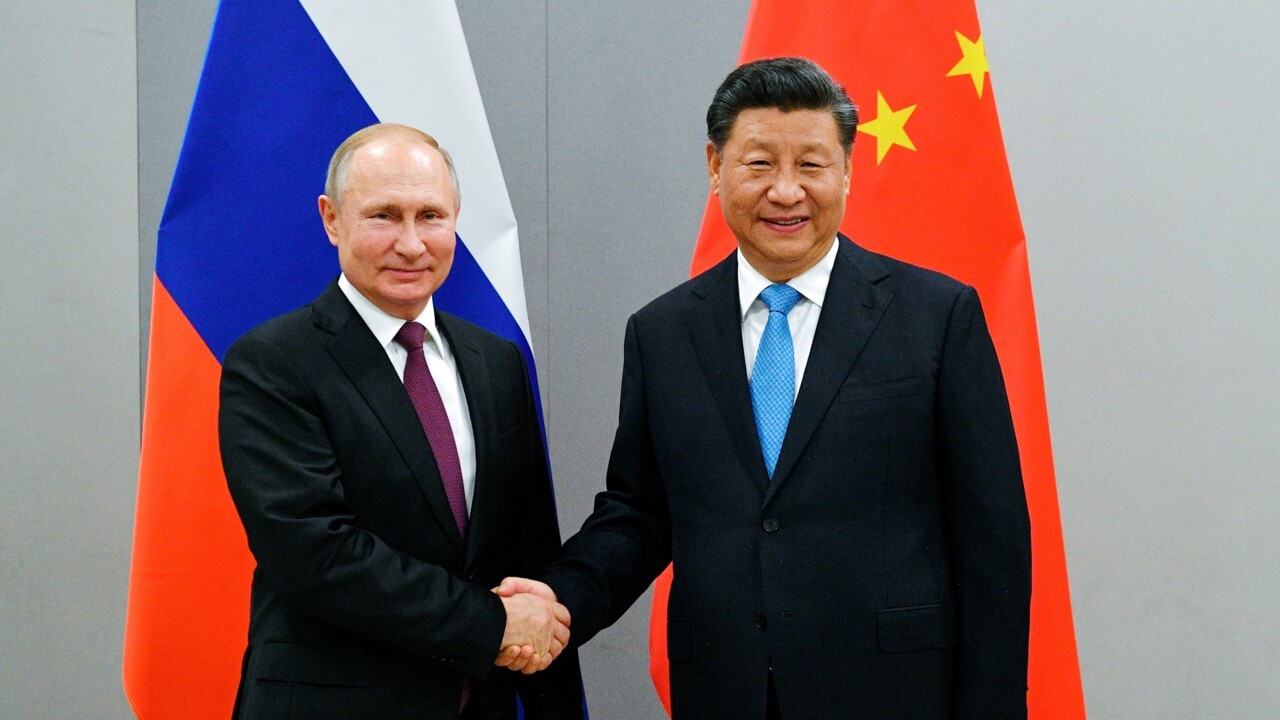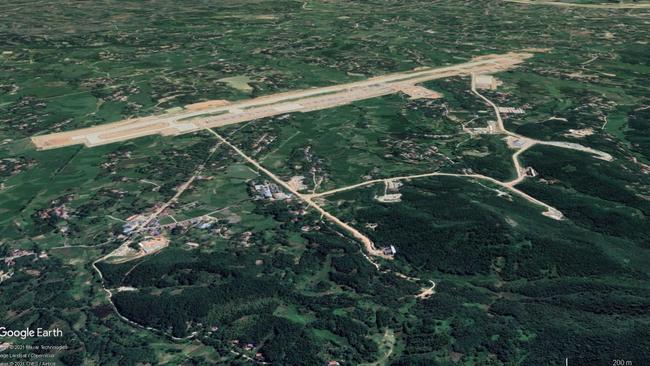Australia ‘virtually defenceless’ against China’s new long-range stealth bomber
China is poised to unveil a new hi-tech weapon later this year that will dramatically shift the regional power balance – and leave Australia exposed.

Innovation
Don't miss out on the headlines from Innovation. Followed categories will be added to My News.
Enormous under-mountain bunkers are being built to shield China’s next-generation stealth bombers from all forms of attack – including a nuclear strike.
Satellite photos have revealed several air bases undergoing extensive modernisation and expansion work to house the People’s Liberation Army Air Force’s nuclear-capable H-20 stealth bombers, as well as its existing fleet of H-6N strategic bombers.
RELATED: China’s sneaky new move uncovered
New Google Earth photos of Neixiang Airfield shows the enormous maw of two bunker entrances carved into a mountain alongside the airfield.
And images of other air bases also reveal extensive upgrades and enlargement of underground facilities.
Military analysts believe it may be part of an effort to secure China’s long-range strategic strike capability, including the air-launched component of its “nuclear triad”, from all forms of attack.

Under the mountains
Open-source intelligence analysts have been poring over satellite imagery to glean what they can about China’s enormous military infrastructure upgrade project.
Several airfields within striking range of Taiwan, India and the South China Sea are undergoing dramatic expansion, with new runways, reinforced hangars, underground ammunition and fuel stores and command facilities.
But the massive project appears to extend to its airborne nuclear capabilities.
RELATED: Australia’s daring move against China
The latest round of satellite images reveals work on the Nanyang-Neixing airfield is nearing completion.
And captured sitting on the tarmac near the long runway is what the entire hardened facility is all about – a strategic bomber.
A lone example of a Chinese-built H-6 bomber – a variant of the 1950s-era Russian Tu-16 “Badger” – is seen sitting on a deployment apron, with support equipment parked nearby.
It may be one of Beijing’s secret H-6Ns, a variant specifically built to carry and deliver nuclear weapons.

Neixiang N32.973274, E111.882773
“The telling feature of Neixiang Airfield that is suggestive of a nuclear mission is the adjacent underground facility (UGF),” says China Aerospace Studies Institute (CASI) director Roderick Lee.
Deep trenches are carved into a hillside immediately alongside the airfield, with various tunnels and facilities nestled into a cliff-face.
On top stands a new command and barracks centre, with multistorey buildings arrayed around a central parade ground.
But a new highway runs past this – smack into the side of another long, tall mound. It is here that the bulk of recent work has been targeted.
RELATED: America moves to ‘free up shooters’
Two enormous new hangar entrances have been hewn out of the rock face on its opposite face. A smaller third one alongside is older and reveals the true scale of the new work.
The two portals, Mr Lee says, appear to be about 61 metres wide.
That makes them more than capable of accepting an H-6 with its wingspan of 33 metres.
And the as-yet-unseen H-10 stealth bomber is not likely to be considerably broader.
“The Neixiang Airfield UGF is also built with survivability in mind,” Mr Lee writes.
“The UGF lies under roughly 220 metres of limestone overburden … (and) may be able to withstand a 300-400 kiloton surface burst – roughly equivalent to a US B61 nuclear weapon.”

Lu’an N31.62806, E116.269537
Renovation works observed at the long-dormant Lu’an airfield some 400km to the east also indicate an intended use as a nuclear bomber base.
Recent satellite photos reveal new construction work alongside a runway undergoing comprehensive resurfacing.
Situated deep inside Henan Province, satellite images show the framework of 20 new shelters in various stages of erection.
They’re being built to a scale large enough to house H-6 and H-20 strategic bombers.
RELATED: South China Sea tensions at ‘maximum’
A series of taxiways and caverns in the adjoining mountain range also show signs of enlargement to accommodate these aircraft.
Old traffic control and accommodation blocks have been demolished, and new multistorey constructions are well underway.
Drainage work is also evident in the airfield’s surroundings.
The airfield is not yet as complete as Neixiang.
Photos reveal only heavy earthmoving equipment and storage containers on its muddy grounds. None of its intended aircraft has yet been seen.

Stealth bomber
China’s new Xian H-20 Stealth Bomber will reportedly be unveiled to the public later this year, marking yet another dramatic shift in the regional power balance.
So far only “teased” in PLA propaganda videos, it appears to have a shape very similar to the 30-year-old United States B-2 “Spirit” stealth bomber.
“A PLAAF bomber squadron should have its first H-20s by the late 2020s,” aerospace analyst Bradley Perrett writes for the Australian Strategic Policy Institute (ASPI).
“If so, the type should be operational in useful numbers in the early 2030s.”
The H-20 is believed to have a significantly more extended range than the existing H-6 fleet.
This would likely enable it to fly up to 5000km without the need to refuel.
Its primary purpose would be to carry cruise missiles. And these could carry either nuclear or conventional warheads.
“Cruise missiles are hard and costly to shoot down,” Mr Perrett writes.
“Australia is virtually defenceless against them. Barely discussed is that an unimaginable range of Australian military and civilian facilities and infrastructure can be knocked out by cruise missiles.
“For example, we endlessly debate the cost of submarine programs, but where, exactly, does the Royal Australian Navy expect to refuel and restock these vessels after each war patrol? Which facilities are expected not to be smoking ruins?”
Jamie Seidel is a freelance writer | @JamieSeidel
Originally published as Australia ‘virtually defenceless’ against China’s new long-range stealth bomber



